Ink, Press, Inspire
Part 1: Progressive Printmaking
Expectations Across Different Educational Stages
Expectations for printmaking skills evolve significantly from PreK to high school, incorporating various techniques and materials to enhance learning and creativity:

Pre-K and K – Ms. Anderson’s Approach
I can… recognize that each print I make is a copy of the original image.

This early stage focuses on sensory exploration and the discovery of textures and patterns. Experimentations may begin with stamping and printing using everyday and natural materials (for example, an apple cut in 1/2).
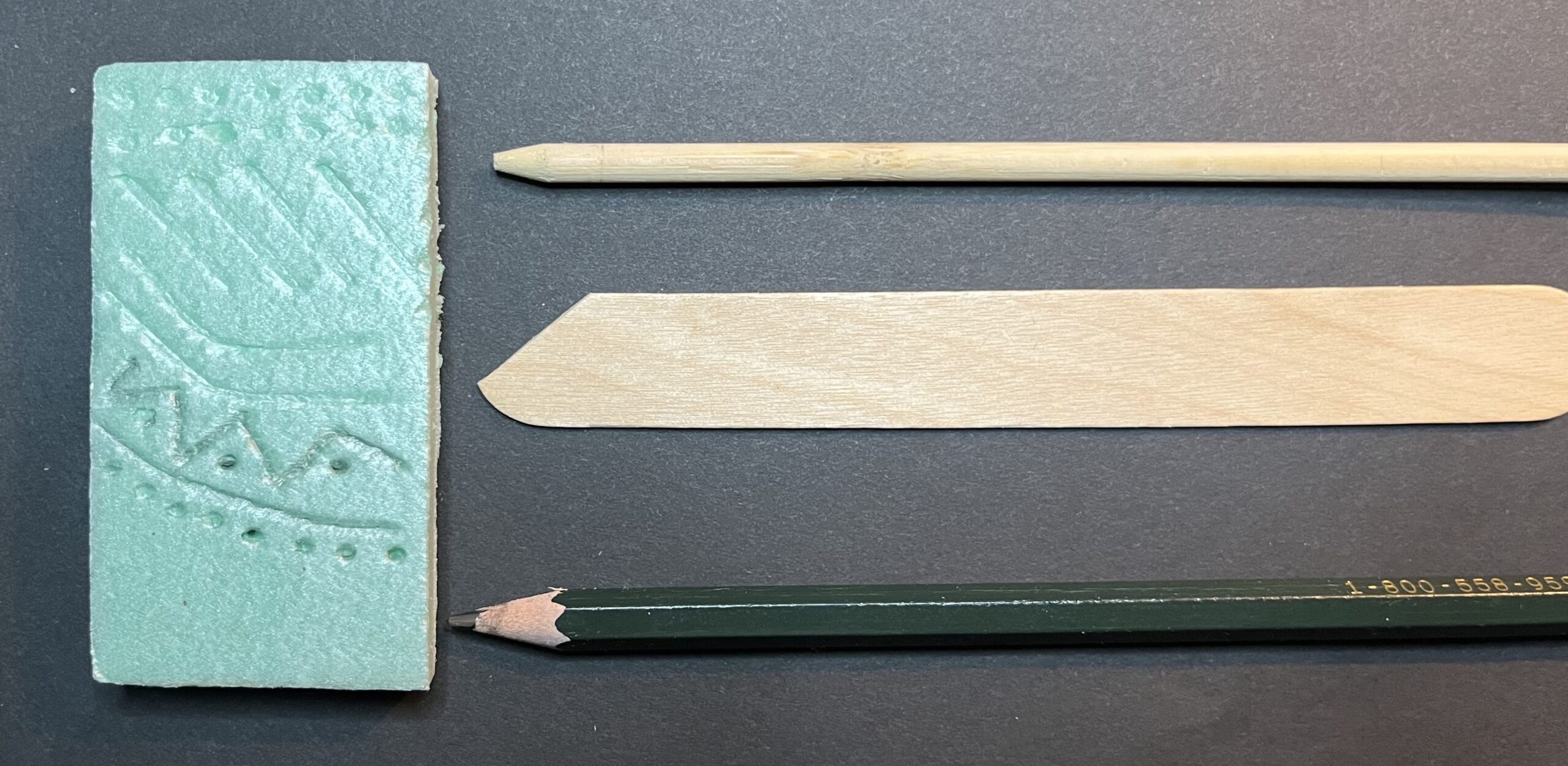
Ms. Anderson introduces the idea to her youngest students that prints are like copies, similar to how multiple newspapers share the same content. She explains that creating prints means making several versions of the same image, known as an edition, but each piece is distinct and valued for its uniqueness.
Images credit: Ms. Anderson
Elementary School – Ms. Bober’s Approach
I can… create prints that explore patterns and repetition, and learn to prepare my paper correctly for printmaking.

Ms. Bober integrates printmaking with lessons on line work, patterns, and repetition, using art history examples like Klimt, Warhol, and Escher. Students learn to carve designs into their styrofoam with a ballpoint pen, or use other simple tools for direct drawing on the styrofoam. She has them use water-soluble markers to make the prints, so they also learn to manage the wetness of the paper for perfect prints.
This phase emphasizes a hands-on introduction to printmaking, transitioning from exploratory practices to more structured design thinking.
Images credit: Ms. Bober



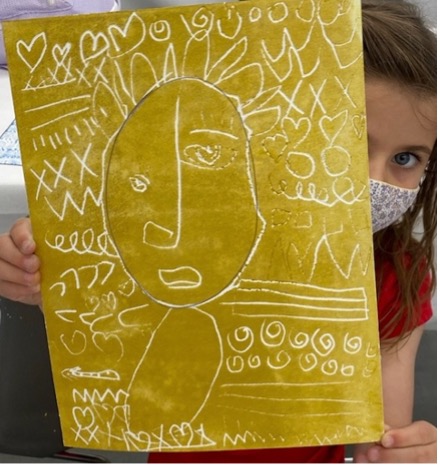
Images credit: Ms. Anderson
Early Elementary Techniques Expansion: Students can also experiment with styrofoam plates, printing ink, and brayers. Initially, results may vary, but using tempera or acrylic ink offers a cost-effective and accessible way for students to experiment. This stage encourages experimentation, with the quick-drying nature of these inks necessitating a faster workflow.

Middle School – Ms. Hess’s Strategy
I can… explore the Elements of Art and Principles of Design in my printmaking projects, drawing inspiration from a variety of examples.
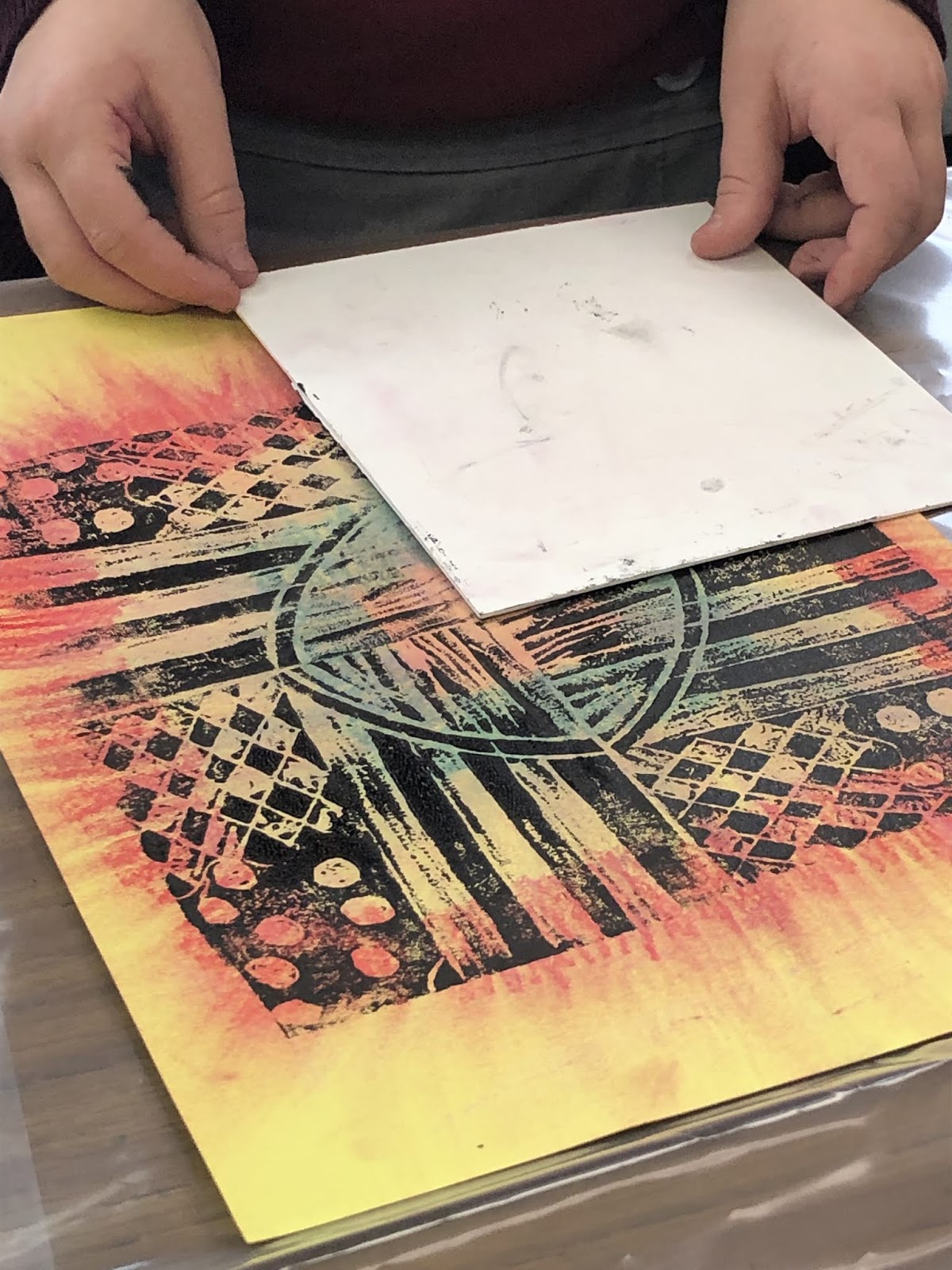
In middle school, Ms. Hess delves into the Elements of Art (line, shape, form, space, texture) paired with the Principles of Design (balance, proportion, pattern). She uses both historical artworks and previous student projects as examples to inspire. The focus is on understanding these foundational concepts through the lens of printmaking.
As students gain in skill and confidence, the focus shifts towards planning and composition. Students plan out their design, can mark it on the styrofoam with water soluable markers, and use black ballpoint pens for clearer visibility of their designs on styrofoam. This method prepares students for more advanced carving techniques.
The teacher can introduce block printing ink, which is water soluble, but dries slower than paint, giving students more time to position and print after application.
Images credit: Ms. Hess


Images credit: Ms. Bober
High School – Mrs. Fish’s Focus
I can… create complex relief prints that emphasize balance, contrast, and texture, using a variety of carving techniques for depth and dimension.
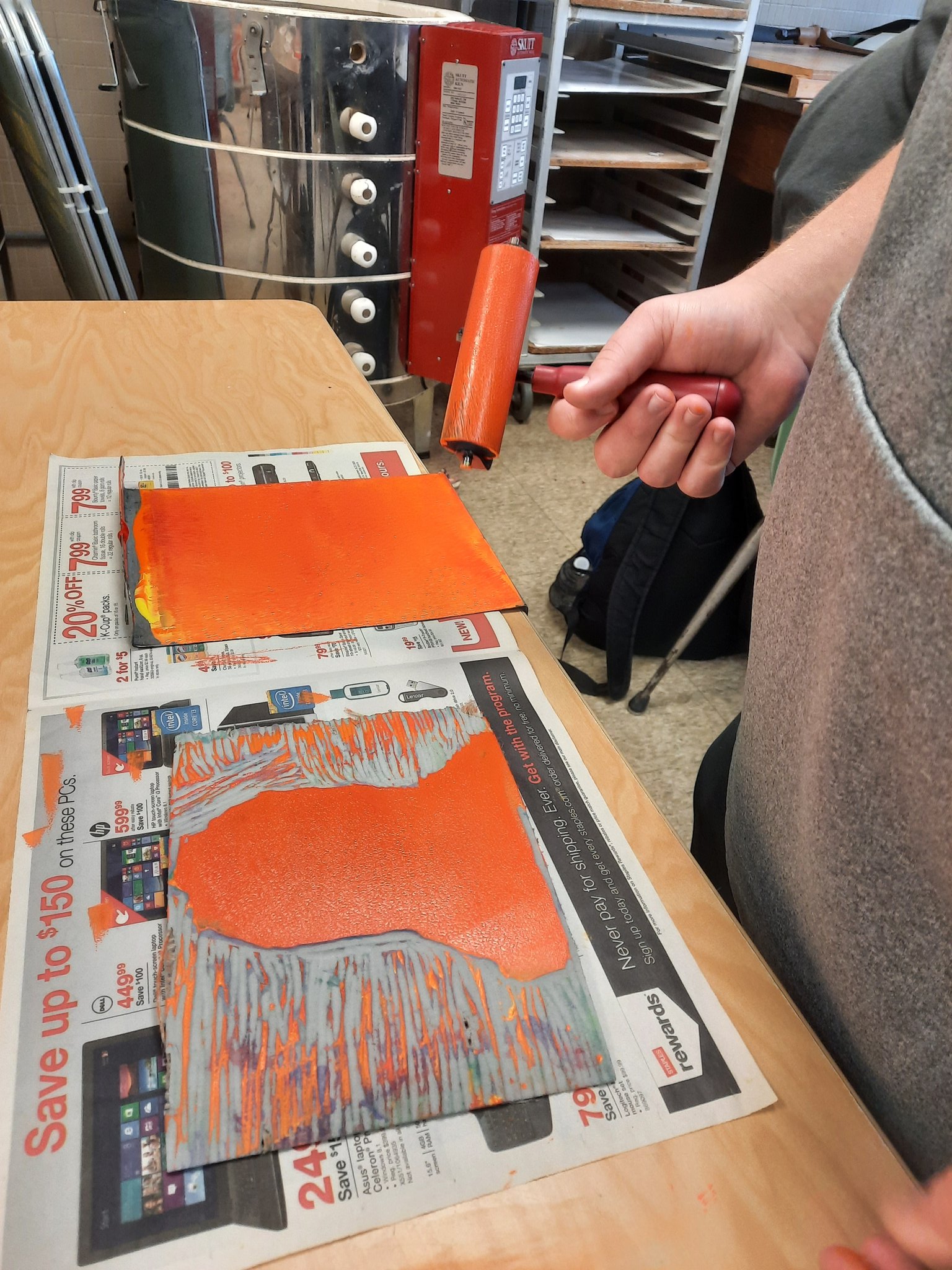
High school students advance their study by concentrating on specific elements like positive/negative space and line quality, alongside design principles such as emphasis and balance. Mrs. Fish also guides students in the technical aspects of relief prints and encourages innovative use of line quality in designs. Text is incorporated separately, allowing images to stand alone in their expressive capacity.
With a solid foundation in relief printing, students can advance to using EZ Carve blocks and linoleum cutters for more detailed work. This stage marks a significant shift towards mastering printmaking, with a focus on precision and artistic expression.
Images credit: Ms. Hess
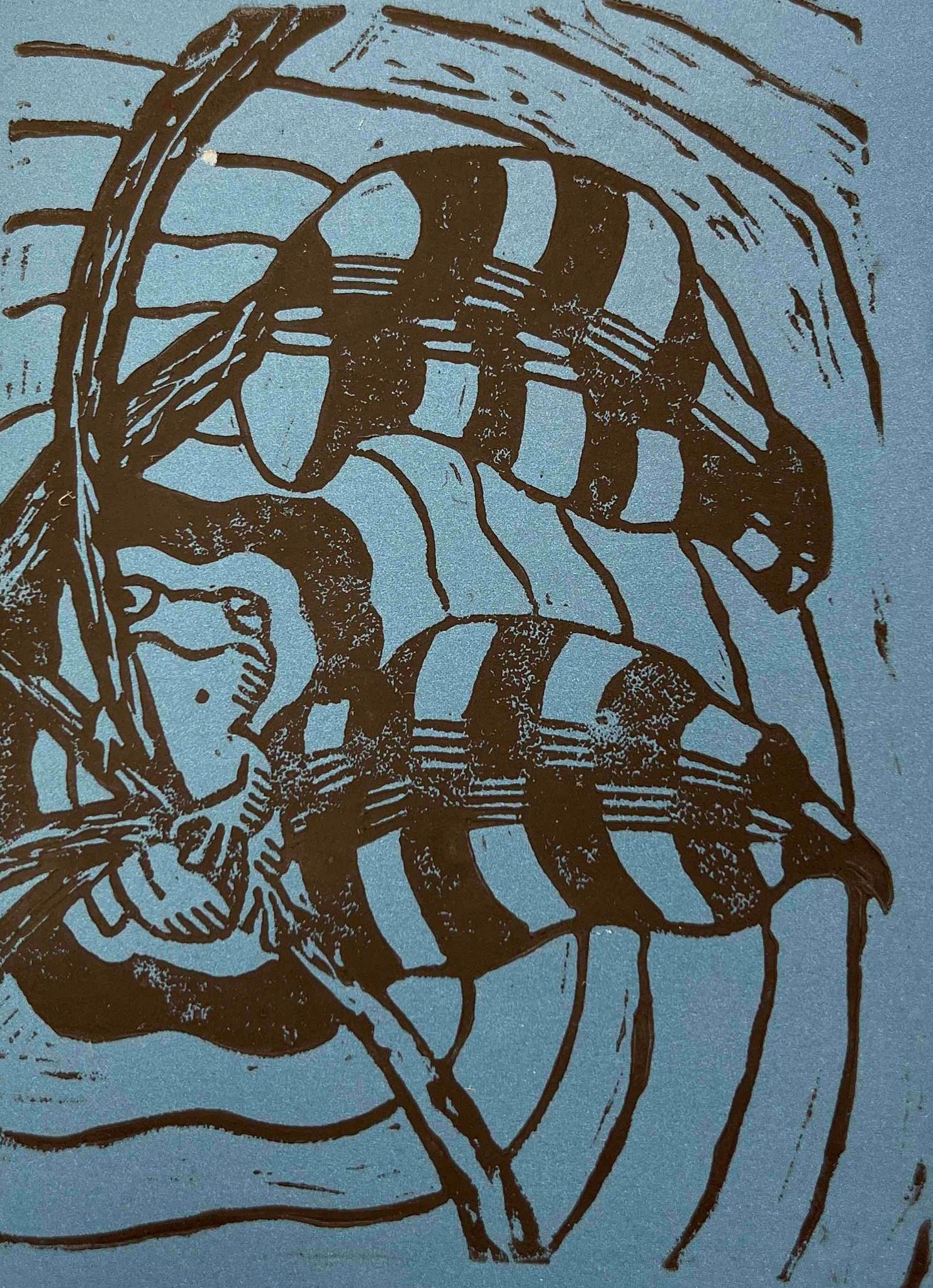
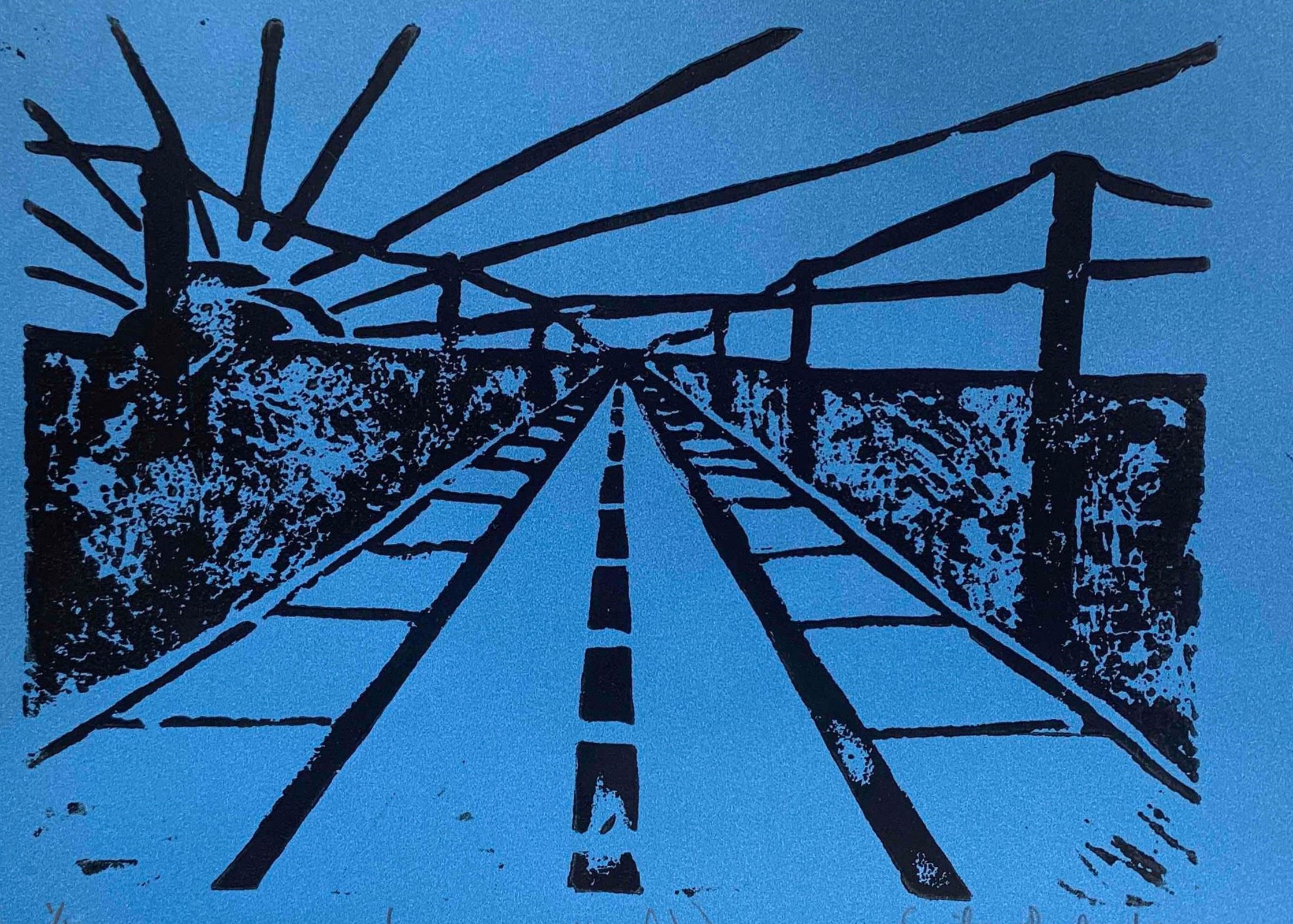
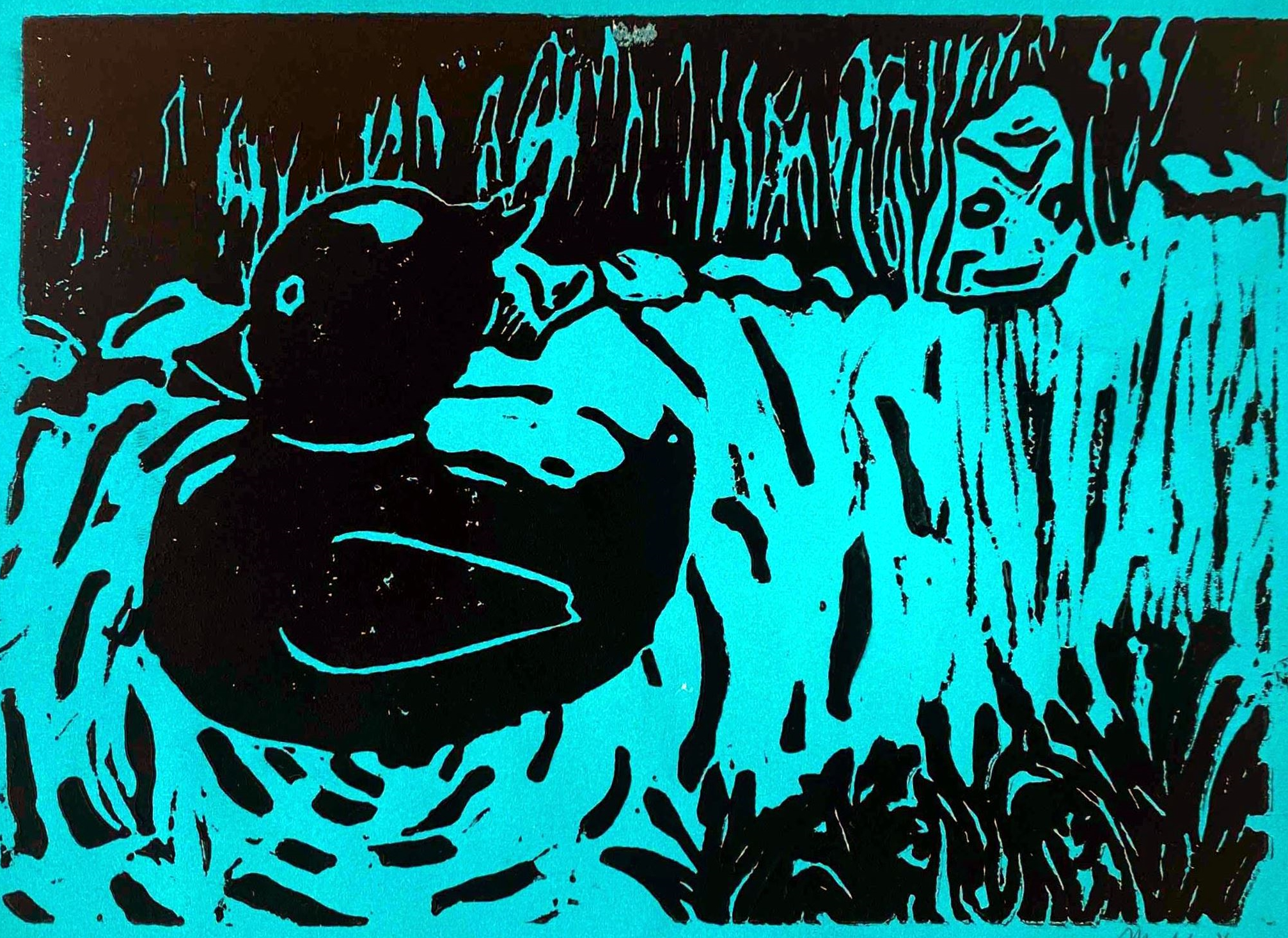
Images credit: Ms. Fish

Mrs. Hess, St. Francis of Assisi School; Triangle, VA; PreK-8th grade Art;
Dr. Debi Bober, Cubberley TK-8, LBUSD, Long Beach, CA, TK-8 Art Specialist;
Mrs. Anderson, Hardin Valley Academy & Knoxville Museum of Art Knoxville, Tennessee; Pre-K-8
